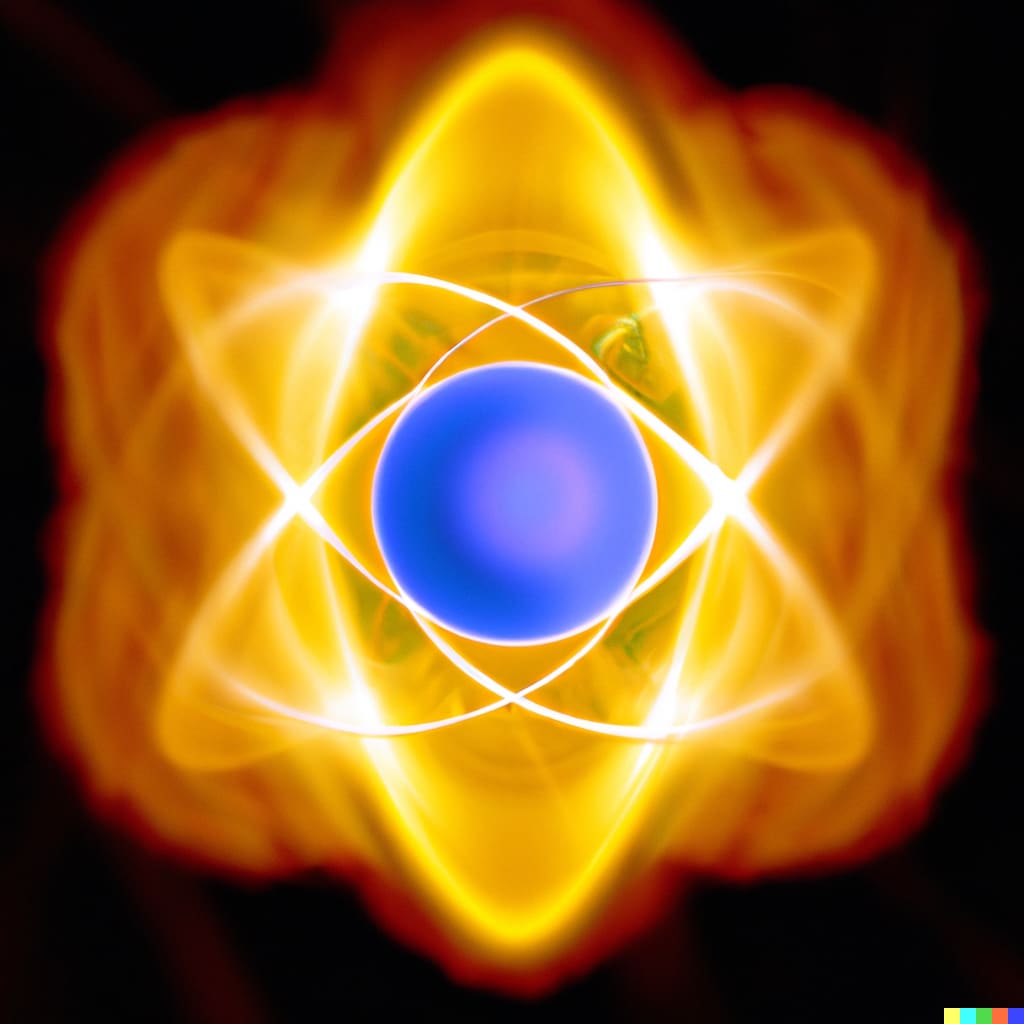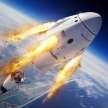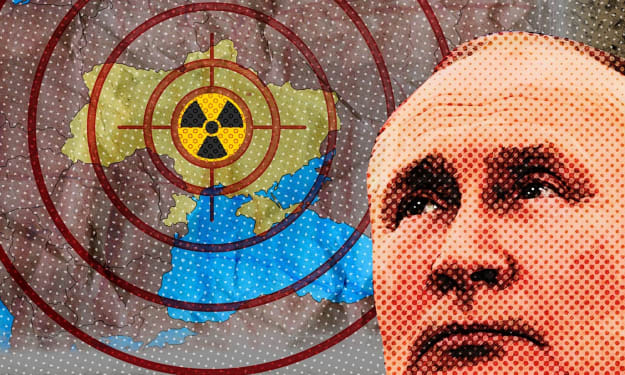What is Nuclear Fusion?
Exploring the Science, Applications, and Challenges of Harnessing the Power of Nuclear Fusion

Introduction
Nuclear fusion is the process by which two atomic nuclei combine to form a heavier nucleus, releasing an enormous amount of energy in the process. This process is the same one that powers the sun and other stars, and scientists have long sought to harness this power for practical applications on Earth. Nuclear fusion has the potential to provide a nearly limitless source of clean energy, with none of the harmful emissions associated with traditional fossil fuels. In this article, we will explore the science behind nuclear fusion, the various types of fusion, its potential applications, and the challenges and environmental impacts associated with it.
The Science Behind Nuclear Fusion
At its core, nuclear fusion is the process of combining two atomic nuclei to form a heavier nucleus. This process releases an enormous amount of energy in the form of light and heat. However, achieving nuclear fusion is not as simple as just smashing two atoms together. There are several conditions that must be met for fusion to occur.
The Basics of Atomic Structure: Atoms are made up of a nucleus, which contains positively charged protons and neutral neutrons, surrounded by negatively charged electrons. The number of protons in an atom determines what element it is. For fusion to occur, two atomic nuclei must come close enough together that the strong force, which holds the nucleus together, can overcome the electromagnetic force, which causes the positively charged protons to repel each other.
The Fundamental Forces at Play in Nuclear Fusion: There are four fundamental forces at play in nuclear fusion. The strong force is responsible for holding the nucleus together and is the force that must be overcome for fusion to occur. The electromagnetic force is responsible for the attraction between positively charged protons and the repulsion between like charges. The weak force is responsible for some nuclear processes, such as beta decay. The gravitational force is responsible for the attraction between objects with mass.
The Conditions Necessary for Nuclear Fusion to Occur: In order for fusion to occur, the two atomic nuclei must be brought close enough together that the strong force can overcome the electromagnetic force. This requires extremely high temperatures and pressures. At high temperatures, the atomic nuclei are moving fast enough that they can overcome their mutual repulsion and come close enough together for fusion to occur. At high pressures, the atomic nuclei are pushed close enough together that the strong force can overcome the electromagnetic force. The conditions necessary for fusion to occur are typically only found in extreme environments such as the sun, but scientists have been working to recreate these conditions on Earth.
Overall, nuclear fusion is a complex and fascinating process that is driven by fundamental forces at the heart of the universe. Understanding these forces and the conditions necessary for fusion to occur is essential for developing practical applications for nuclear fusion. In the next section, we will explore the various types of fusion and the different methods used to achieve it.
Types of Nuclear Fusion
There are several different types of nuclear fusion, each with its own set of advantages and challenges. Here, we will explore the three main types of fusion: magnetic confinement fusion, inertial confinement fusion, and other forms of fusion.
Magnetic Confinement Fusion: Magnetic confinement fusion, or MCF, is the most widely studied type of fusion. MCF uses powerful magnetic fields to confine a plasma of atomic nuclei at high temperatures and pressures, allowing fusion to occur. The most well-known type of MCF is tokamak fusion, which uses a donut-shaped vacuum chamber to confine the plasma. Other types of MCF include stellarators, which use more complex magnetic fields to confine the plasma, and reversed field pinch devices, which use a helical magnetic field to confine the plasma.
Inertial Confinement Fusion: Inertial confinement fusion, or ICF, uses powerful lasers to rapidly heat and compress a small pellet of fusion fuel, causing it to undergo fusion. This process is often referred to as "miniature suns" as it replicates the conditions found in the sun's core. ICF requires extremely precise timing and aiming of the laser beams, as well as the ability to fabricate tiny fusion fuel pellets.
Other Forms of Fusion: There are several other forms of fusion being studied, including muon-catalyzed fusion, which uses muons to catalyze the fusion process, and bubble fusion, which uses collapsing bubbles to create the high pressures necessary for fusion.
Each type of fusion has its own set of advantages and challenges. MCF, for example, is the most well-studied and has the potential for sustained energy production, but requires complex magnetic field systems and has yet to achieve break-even energy output. ICF has the potential for high energy output but is difficult to scale up and is currently only used for experimental purposes. Other forms of fusion are still in the early stages of research and development.
In the next section, we will explore the potential applications of nuclear fusion, including energy production, medical applications, and nuclear weapons.
Applications of Nuclear Fusion
Nuclear fusion has the potential for a wide range of applications, from energy production to medical treatments. Here, we will explore some of the most promising applications of nuclear fusion.
Energy Production: One of the most promising applications of nuclear fusion is as a source of clean, renewable energy. Unlike traditional fossil fuels, which release harmful emissions when burned, nuclear fusion produces no greenhouse gases or other pollutants. It also has the potential to provide a nearly limitless source of energy, with a fuel source that is widely available and easily obtainable. While nuclear fusion reactors are still in the experimental stages, if they can be successfully developed and scaled up, they could revolutionize the world's energy production.
Medical Applications: Nuclear fusion also has potential applications in medicine. For example, it could be used to produce isotopes for medical imaging or to treat cancer. Fusion reactions can be used to create short-lived isotopes, which can be used for diagnostic imaging or to destroy cancerous cells.
Nuclear Weapons: While the potential for nuclear fusion as a source of clean energy is exciting, it is important to note that fusion reactions can also be used to create nuclear weapons. The same fusion reactions that power the sun can also be used to create incredibly destructive weapons. As such, it is important to carefully control and regulate the development and use of nuclear fusion technology.
In the next section, we will explore some of the challenges and environmental impacts associated with nuclear fusion. While nuclear fusion has the potential to revolutionize the world's energy production, it is not without its challenges and risks.
Advantages and Challenges of Nuclear Fusion
Nuclear fusion has the potential to revolutionize the world's energy production, but it is not without its challenges and risks. Here, we will explore some of the advantages and challenges of nuclear fusion.
Advantages:
- Clean, Renewable Energy: Nuclear fusion has the potential to provide a nearly limitless source of clean, renewable energy. Unlike traditional fossil fuels, which release harmful emissions when burned, nuclear fusion produces no greenhouse gases or other pollutants.
- Abundant Fuel Source: The fuel source for nuclear fusion, hydrogen, is abundant and easily obtainable. It can be extracted from seawater or produced from other sources, making it an easily accessible fuel source.
- Safety: Nuclear fusion reactions are inherently safe, as there is no risk of a runaway reaction or meltdown like there is with nuclear fission.
Challenges:
- Cost: Developing and scaling up nuclear fusion technology is expensive and time-consuming. The research and development costs associated with nuclear fusion are high, and it is uncertain whether the technology will be cost-effective compared to other sources of energy.
- Technical Challenges: There are many technical challenges associated with nuclear fusion, including maintaining the high temperatures and pressures necessary for fusion to occur, as well as developing materials that can withstand the extreme conditions of a fusion reactor.
- Waste Management: While nuclear fusion produces no greenhouse gases or other pollutants, it does produce radioactive waste. While this waste is much less dangerous and long-lived than the waste produced by nuclear fission, it still presents a challenge for disposal and storage.
Environmental Impact: The environmental impact of nuclear fusion is not fully understood. While it produces no greenhouse gases or other pollutants during operation, the manufacturing and disposal of nuclear fusion reactors and associated materials could still have an impact on the environment.
Conclusion:
Nuclear fusion has the potential to revolutionize the world's energy production, providing a nearly limitless source of clean, renewable energy. However, there are many technical, economic, and environmental challenges associated with nuclear fusion that must be overcome before it can become a viable source of energy. Despite these challenges, nuclear fusion remains an exciting area of research and development, with the potential to transform the way we produce and consume energy.
Environmental Impacts of Nuclear Fusion
While nuclear fusion has the potential to be a source of clean, renewable energy, there are still potential environmental impacts associated with its development and implementation.
- Manufacturing and Disposal of Fusion Reactors: The manufacturing and disposal of fusion reactors and associated materials can have environmental impacts. For example, the mining and processing of raw materials, such as the metals used in reactor components, can result in air and water pollution.
- Land Use: Fusion reactors require a significant amount of space for installation, which can have an impact on local ecosystems and habitats. Land use for fusion reactors may also result in deforestation or destruction of natural habitats.
- Water Use: Nuclear fusion reactors require large amounts of cooling water to operate. This can have an impact on local water resources and aquatic ecosystems, particularly in areas where water is already scarce.
- Radioactive Waste: While the radioactive waste produced by nuclear fusion is much less dangerous and long-lived than the waste produced by nuclear fission, it still presents a challenge for disposal and storage. The safe management and disposal of nuclear waste is critical to mitigating its potential environmental impact.
- Potential Accidents: While nuclear fusion reactions are inherently safe, accidents can still occur during the manufacturing, installation, or operation of fusion reactors. These accidents can have environmental impacts, such as the release of radioactive materials into the environment.
Conclusion:
While nuclear fusion has the potential to be a source of clean, renewable energy, it is important to consider its potential environmental impacts. To ensure that the development and implementation of nuclear fusion technology is sustainable, it is important to carefully manage its manufacturing, disposal, and operation. This includes reducing the environmental impact of materials and land use associated with fusion reactors, minimizing water use, and safely managing and disposing of radioactive waste. By carefully managing the environmental impacts of nuclear fusion, we can ensure that it remains a viable option for clean energy production in the future.
Finale Conclusion
Nuclear fusion is a promising source of clean, renewable energy that has the potential to revolutionize the way we produce and consume energy. By fusing together atomic nuclei to release energy, nuclear fusion can provide a nearly limitless source of power without the harmful emissions associated with traditional fossil fuels. However, the development and implementation of nuclear fusion technology is not without its challenges, including high research and development costs, technical challenges, waste management, and potential environmental impacts. Despite these challenges, nuclear fusion remains an exciting area of research and development, with the potential to transform the way we produce and consume energy in a sustainable and environmentally responsible way. With continued research and development, nuclear fusion could become a key player in the world's transition to a clean energy future.
About the Creator
Samuel
I write about Science/Tech/Business & Anything that can give value to people ❤️
I'm on YouTube too guys feel free to check out my channel here: www.youtube.com/@sambladeco
Enjoyed the story? Support the Creator.
Subscribe for free to receive all their stories in your feed. You could also pledge your support or give them a one-off tip, letting them know you appreciate their work.






Comments
There are no comments for this story
Be the first to respond and start the conversation.